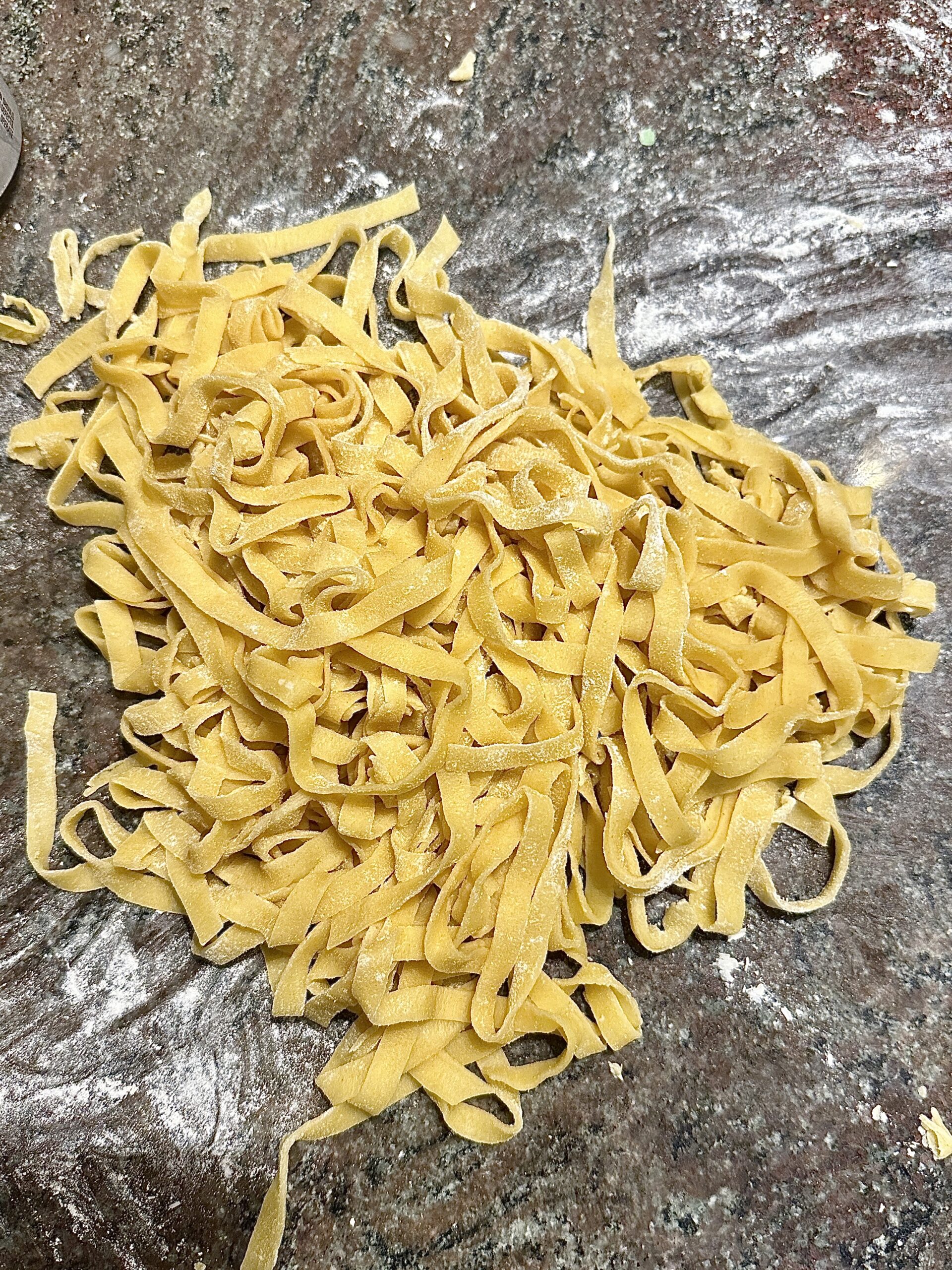BASIC HANDMADE PASTA

BASIC HANDMADE PASTA
Whip up your own handmade pasta with this easy recipe—a delicious foundation for countless gourmet dishes.
Equipment
- Pasta Machine
- Kitchen Scale
- Bench Scraper
- Saran Wrap
Ingredients
- 100 grams all purpose flour plus extra for dusting
- 1 large egg
- 1 tbsp olive oil
- 1 tsp salt
Instructions
- Prepare the Dough: On a clean work surface, pour out the flour and form a mound. Create a well in the center large enough to hold the egg. Add the egg, olive oil, and salt into the well. Using a fork, gently beat the egg and oil mixture, gradually incorporating the surrounding flour, starting from the inner rim of the well.100 grams all purpose flour, 1 large egg, 1 tbsp olive oil, 1 tsp salt
- Knead the Dough: Once the mixture becomes thick and starts forming into a dough, use your hands to bring it together. Knead the dough on a lightly floured surface. Press down and away with the heel of your hand, fold the dough over itself, and turn. Repeat this process for about 10 minutes until the dough is smooth and elastic. Test the dough by pressing it with your finger; if it slowly springs back, it’s ready.
- Rest the Dough: Shape the dough into a ball, wrap it in plastic wrap, and let it rest at room temperature for 30 minutes. This allows the gluten to relax, making the dough easier to roll out.
- Roll and Cut the Pasta: Divide the dough into manageable pieces if preferred. Flatten each piece slightly with your hand. Set your pasta machine to the widest setting and pass the dough through several times, folding it over each time until smooth. Gradually reduce the machine’s thickness setting and continue to roll the dough into sheets to your desired thickness. Attach the desired cutter to the pasta machine and feed the sheets through to cut into strands. Dust the pasta lightly with flour to prevent sticking.
- Cook the Pasta: Bring a large pot of salted water to a boil. Cook the pasta for 2-4 minutes until al dente. Drain and serve with your favorite sauce.
